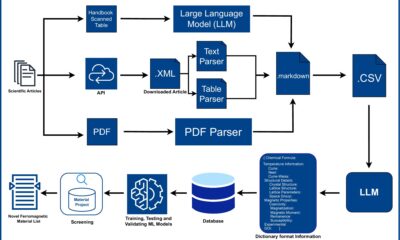Business
Power Of SIP: Want Rs 4 crore In 29 years? Here’s How Much You May Need To Invest Every Month

Last Updated:
Embrace the power of compounding wealth by opting for a mutual fund SIP plan that suits your monthly income standards and risk capacity.

How much to invest to get Rs 4 crore as wealth? (Photo Credit: Instagram)
Looking to accumulate wealth to safeguard your future or build a significant retirement corpus? It is time for you to get your investment bone ticking instead of merely paying expenses from your monthly salary. It is time to embrace the power of compounding by investing a fixed amount every month in a Systematic Investment Plan towards a beneficial mutual fund scheme available in the market.
A Systematic Investment Plan entails a long-term investment strategy, where valuable interest is generated and earned on the principal sums invested. Most investors hope to generate enough gains to sustain their livelihood amid rising inflation and uncertainties. But what if an investor wishes to deal in crores at the end of the investment tenure, how much would they have to invest every month?
How To Earn Rs 4 Crore Via 29-Year-Long SIP Plan
If you invest through a Systematic Investment Plan that delivers an average annual return of 12 per cent, you can aim to accumulate over Rs 4 crore by the end of 29 years. To reach this goal, an investor would need to contribute Rs 15,000 per month throughout the investment period.
Over 29 years, the estimated gains generated from investing Rs 15,000 monthly at a 12 per cent return work out to Rs 3.58 crore. This figure is indicative and may change depending on market performance, economic conditions, and fund behaviour.
Total Earnings
If we combine the principal investment of Rs 52,20,200 (Rs 15,000 * 12 months * 29 years) with the capital gains achieved, we end with a total of Rs 4.1 crore. So you can start your investment journey with the ambition of reaching over Rs 4 crore in wealth by investing Rs 15,000 in a SIP mutual fund plan.
Before proceeding, however, individuals must do due diligence and consult a financial expert to identify the best scheme for them to invest in. Since mutual funds are subject to market risks, individuals with a poor risk appetite should be extra careful before investing.
A team of writers and reporters decodes vast terms of personal finance and making money matters simpler for you. From latest initial public offerings (IPOs) in the market to best investment options, we cover al…Read More
A team of writers and reporters decodes vast terms of personal finance and making money matters simpler for you. From latest initial public offerings (IPOs) in the market to best investment options, we cover al… Read More
November 15, 2025, 18:11 IST
Read More
Business
Indias Wholesale Inflation Bottomed Out, May Still Remain Negative Through 2025-26: Report

New Delhi: India’s Wholesale Price Index (WPI) or wholesale inflation has “bottomholesale inflation bottomed out, may still remain negated out” and will probably gain slight momentum from November onwards, even as it may still remain in negative territory for most of the remaining months of 2025-26, Union Bank of India said in a report.
The Bank’s 2025-26 WPI forecast is currently tracking below 0.35 per cent amid what are being stated as subdued global commodity prices and a seasonal decline in food prices (with the impact of floods on food inflation seen to be capped).
“Food WPI remains depressed – spatial flooding and supply-chain disruptions did not materialise as expected, keeping food prices contained,” the report read. With 2025-26 Consumer Price Index (CPI) or retail inflation projections of the Union Bank of India also running sharply below the RBI’s latest estimates, it expects a 25 basis points repo rate cut in the upcoming December monetary policy review meeting.
While real GDP growth momentum remains robust, the report asserts that nominal GDP growth is expected to come under pressure due to subdued 2025-26 CPI and WPI projections. India’s wholesale inflation turned negative in October, with the Wholesale Price Index (WPI) recording a decline of (-) 1.21 per cent in October 2025 compared to the same month last year, according to official data released by the Ministry of Commerce and Industry on Friday.
A decrease in the costs of food articles, crude petroleum, natural gas, electricity, mineral oils, and basic metals mainly drove the fall in prices. The Ministry stated that the month-on-month change in WPI for October stood at (-) 0.06 per cent compared to September 2025.
The government releases the index number of wholesale price in India every month on the 14th of every month (or next working day, if the 14th falls on a holiday) with a time lag of two weeks of the reference month, and the index number is compiled with data received from institutional sources and selected manufacturing units across the country.
Inflation has been a concern for many countries, including advanced economies. However, India has largely managed to steer its inflation trajectory in a favourable direction. The RBI held its benchmark repo rate steady at 6.5 per cent for the eleventh consecutive time, before cutting it for the first time in about five years in February 2025.
Business
Gems trade slump: Exports fall 31% in October; bullion volatility, early US stocking hit demand – The Times of India

India’s gems and jewellery exports fell sharply in October, sliding 30.57% to $2.17 billion (Rs 19,172.89 crore) compared to the same month last year, according to data released by the Gems and Jewellery Export Promotion Council (GJEPC), PTI reported.Exports in October 2024 had stood at $3.12 billion (Rs 26,237.1 crore).GJEPC chairman Kirit Bhansali said the decline was largely expected, as overseas buyers had advanced their festive-season stocking before the US tariff came into effect.“Most of the stocking up for the festivals took place before August 27. Therefore, in October the demand was down. The decline in gold and silver exports is triggered by volatile bullion prices,” Bhansali told PTI.He added that exports should revive in November with Chinese market recovery and Christmas demand from major global buyers.Exports of cut and polished diamonds fell 26.97% to $1.02 billion (Rs 9,071.41 crore), down from $1.40 billion (Rs 11,806.45 crore) a year earlier.Shipments of polished lab-grown diamonds also saw a steep slide of 34.90% to $94.37 million (Rs 834.45 crore), compared with $144.96 million (Rs 1,218.25 crore) last October.Gold jewellery exports dropped 28.4% to $850.15 million (Rs 7,520.34 crore) from $1.18 billion (Rs 9,975.17 crore) a year earlier.Exports of coloured gemstones during April–October slipped 3.21% to $250.14 million (Rs 2,173.08 crore).Silver jewellery shipments dipped 16% in October to $121.37 million (Rs 1,072.81 crore), down from $145.05 million (Rs 1,219.01 crore) in 2024.
Business
ITAT Mumbai Verdict: Engineer Cleared In Rs 69 Lakh Unexplained Income Case

Last Updated:
The ITAT’s ruling highlighted complications faced by taxpayers in high-value financial transactions after an engineer argued against an Assessing Officer.
The taxpayer reported investments worth Rs 69 lakh. (representative image)
The Income Tax Appellate Tribunal (ITAT) in Mumbai recently deleted a major addition made by the tax authorities against an Indian engineer. The bone of contention was the engineer’s alleged under-reporting of income while making substantial financial investments.
The verdict by the authorities underpinned the increasing tax complications faced in high-value financial transactions. With their order, ITAT Mumbai not only brought to an end the six-year-long stand-off and provided the taxpayer relief, but also shed light on the digital monitoring tools currently deployed by the Income Tax Department.
Tax Advisory Platform Explains The Case
Tax Buddy, a tax advisory platform, provided a detailed insight into the case at hand via a social media post. The case concerned an engineer who reportedly declared only minimal income in his Income Tax Returns but was found to have purchased a residential flat worth Rs 39 lakh and made fixed deposits worth Rs 30 lakh. It took his total investments to Rs 69 lakh.
An Indian engineer showed minimal income in India
but bought a ₹39L flat and made ₹30L FDs (₹69L total).
Tax officer taxed it as unexplained income; 6 yrs later ITAT Mumbai deleted it
Here’s how the Tax Dept tracks 8 such transactions through the SFT system:
In response, the Assessing Officer (AO) classified the sum as unexplained income as per Section 69 of the Income Tax Act. The Assessing Officer also raised a tax demand against the engineer. While the AO concluded that the declared income doesn’t justify the scale of investments made, the taxpayer argued that their funds came from past savings, family support and verifiable banking channels. The argument unsurprisingly didn’t satisfy the AO. The additions were upheld in earlier stages of appeal before the matter finally reached the ITAT Mumbai.
How The Decision Went In The Taxpayer’s Favour
Despite facing objections, the taxpayer ultimately won the dispute after the Tribunal felt that the AO had not adequately considered the explanations and supporting documents issued by the engineer. In their order, the ITAT mentioned that the source of the funds had been reasonably demonstrated and that the additions couldn’t be sustained on mere assumptions under unexplained income provisions. The Tribunal also emphasised the importance of fair evaluation of cases in which investments stretch over several years and are made through non-taxable flows.
The case reinforced how financial compliance is increasingly data-driven. The Income Tax Department’s surveillance capabilities have only grown rapidly in the last decade through the Statement of Financial Transactions (SFT) system. Integrated with PAN, AIS and several reporting entities, this mechanism allows the department to automatically identify unusual or disproportionate financial activities.
The SFT system monitors transactions based on eight different categories, including cash deposits in savings accounts, cash in current accounts, credit card bills, property purchases or sales of Rs 30 Lakh or more, fixed Deposits of Rs 10 lakh or more and other investment transactions. But even as the system increases transparency, the engineer’s case reminds us why it is equally important for legitimate taxpayers to receive fair and balanced assessments by authorities.
A team of writers and reporters decodes vast terms of personal finance and making money matters simpler for you. From latest initial public offerings (IPOs) in the market to best investment options, we cover al…Read More
A team of writers and reporters decodes vast terms of personal finance and making money matters simpler for you. From latest initial public offerings (IPOs) in the market to best investment options, we cover al… Read More
November 15, 2025, 16:59 IST
Read More
-

 Entertainment1 week ago
Entertainment1 week agoChina unveils£5.4 bn Fujian, its most advanced aircraft carrier yet
-

 Politics1 week ago
Politics1 week agoIDF lawyers warned of possible Gaza war crimes: US intel findings
-

 Entertainment1 week ago
Entertainment1 week agoRobert Pattinson jokes about competing with Gen Z
-

 Tech1 week ago
Tech1 week agoThe Government Shutdown Is a Ticking Cybersecurity Time Bomb
-

 Sports1 week ago
Sports1 week agoIsraeli cycling team loses top sponsor despite honoring request to remove country from name
-

 Entertainment1 week ago
Entertainment1 week agoAlex Cooper apologizes to Taylor Swift for bizarre admission
-

 Tech1 week ago
Tech1 week agoMagnetic materials discovered by AI could reduce rare earth dependence
-

 Tech5 days ago
Tech5 days agoFrom waste to asset: Turning ethanol production CO₂ into jet fuel












